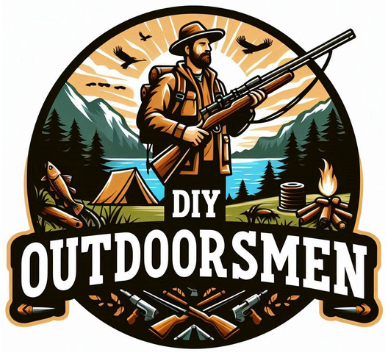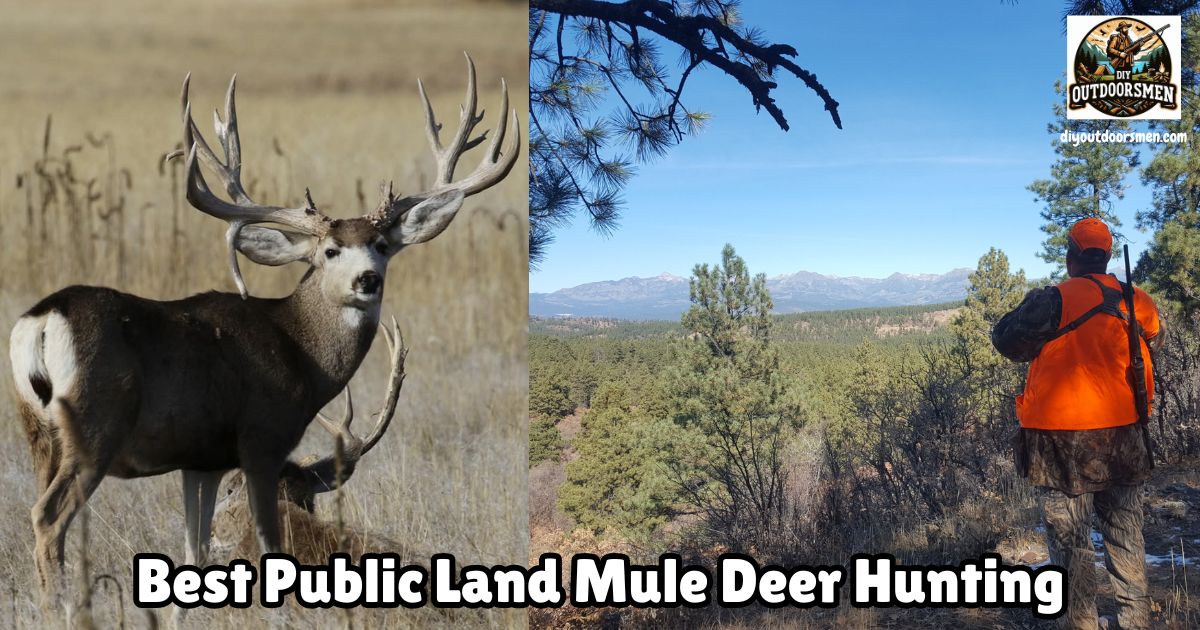Contents
- 1 Top States for Public Land Mule Deer Hunting
- 2 Understanding Public Land Access
- 3 Tag Types: Draw or Over the Counter
- 4 Essential Gear for Public Land Hunts
- 5 Scouting and Locating Mule Deer
- 6 Tips for Success on Public Land
- 7 Common Challenges Hunters Face
- 8 Frequently Asked Questions
- 9 Final Thoughts on Public Land Mule Deer
Public land Mule deer hunting delivers a special mix of challenge, adventure, and reward that keeps me coming back year after year. With the vastness and diversity of public lands across the West, there’s always the chance of tracking down a mature buck in country that feels truly wild.
As someone who has spent countless fall days chasing these elusive deer across different states, I want to share what I’ve learned about the best locations, strategies, and things to consider for anyone interested in public land mule deer hunting.
Top States for Public Land Mule Deer Hunting
Across the western United States, a handful of states stand out for mule deer opportunities on public land. From my experience and research, these places offer a good mix of accessible territory, strong deer numbers, and regulations that aren’t too hard to manage for the average hunter.
- Colorado: With the largest mule deer herd in the country, Colorado is a top pick for hunters eager to get into the mountains or foothills. It has famous trophy units and plenty of spots where you can have realistic expectations and bump into deer.
- Idaho: Idaho stands out for DIY hunters. The mix of over-the-counter tags and vast wilderness areas invites a lot of exploration along with a steady shot at success, whether you’re pushing deep into the wilds or hunting closer to the roadways.
- Montana: Montana offers a classic Western experience. I’ve hunted broad prairies and steep timber ridges, and enjoyed the manageable odds of drawing a general deer tag.
- Wyoming: Wyoming’s tag system takes some planning, but the state offers great public access and a reliable population of quality bucks in high country, sage flats, and everywhere in between.
- Utah: Utah’s managed hunts are a major draw, but even with tough odds for the best spots, there are still decent chances in general season public hunting areas.
- Arizona and New Mexico: Both states are better known for elk and coues deer, but their draw-based mule deer hunts give you a great chance at big bucks in epic scenery. Tags aren’t easy to come by, but for someone itching for a new adventure, they’re worth a look.
Understanding Public Land Access
Access is everything in mule deer hunting. Most hunts take place on ground managed by the Bureau of Land Management, U.S. Forest Service, or state wildlife agencies. Digging into whether an area truly allows public access—and checking the rules about vehicles or camping—makes all the difference and leads to fewer surprises in the field.
States provide online maps and hunter access programs. For example, Montana’s Block Management Program opens private ranches to the public, and Idaho’s Access Yes is similar. I always use these before heading out and keep backup options ready if my first spot is crowded, affected by fire, or otherwise blocked off. Doing the homework ahead of time prevents headaches later on.
Tag Types: Draw or Over the Counter
If I’m dreaming about a mule deer hunt, I have to decide between two things: how easy is it to secure a tag, and do I want a shot at a real monster buck, or am I aiming for a solid hunt and good adventure?
- Over-the-Counter (OTC) Tags: Places like Idaho and certain Montana units offer OTC tags for some seasons or areas. This is perfect for spontaneous planners—show up, grab a tag, and head out. However, expect more company in the field.
- Draw Tags: Other states, including Colorado and Utah, use lotteries. Here, you apply and build up bonus points for a better shot at trophy areas. With these, your hunt might be less crowded and more unique, but you might have to wait a while—sometimes years—for that golden ticket.
The best approach depends on your flexibility, who you’re hunting with, and whether you’re going for a chance at a true giant buck or just want memorable days outside.
Essential Gear for Public Land Hunts
I’ve learned, usually the hard way, that public land mule deer hunting means a lot of walking and requires gear that can handle tough country. Here’s my basic kit:
- Durable Boots: Between rocky slopes and long hikes, good boots are a must.
- Layered Clothing: Weather swings fast, especially up high. I go with layers so I can adjust from frosty dawns to warm afternoons.
- Optics: Quality binoculars and a spotting scope let me pick out deer far away on open hillsides or sage flats.
- Backpack: A strong pack is crucial for hauling everything I need, along with meat if I score.
- Maps or GPS: Getting lost is a real risk, so I always have a GPS app and old-school maps showing property boundaries. I bring spares in case my phone dies.
Other useful gear includes a good knife, a first aid kit, a compact shelter for unexpected weather, and plenty of food and water. If your area allows, bear spray or a sidearm in grizzly country also makes sense.
Scouting and Locating Mule Deer
For me, scouting is half the fun and the real key to success. I start with recent harvest statistics from game agencies, check online forums, use Google Earth to find likely habitat, and often call local wildlife biologists for current tips on deer patterns, burns, or migration routes. Each tidbit helps paint the bigger picture.
Field scouting before season—hiking in on weekends, glassing at first and last light, or running a legal trail camera—is where I pick up important clues. Mule deer follow daily habits: feeding in open areas at sunrise and sunset, then bedding in secluded spots with good views.
I focus on food, cover, and escape terrain. If pressure pushes deer out of obvious spots, I stay flexible and move until I stumble upon an overlooked pocket. Expect to spend as much time scouting as actually hunting if you want to up your chances.
Tips for Success on Public Land
- Plan for Company: I always assume that easier spots near trailheads and roads will be busy. Often, just hiking a little farther or thinking outside the box brings you into deer that others overlook.
- Adapt Quickly: Public land deer turn cautious fast. I use quiet approaches and do plenty of glassing from afar. When the opening rush drives deer deep, I adapt and change my game plan accordingly. Sometimes, new ground opens up after others leave.
- Follow the Rules: Regulations can change from year to year and unit to unit. I double-check every rule, from weapon type to antler restrictions, to stay legal and fair chase.
Mule Deer Terrain and Tactics
I’ve hunted mule deer across all sorts of landscapes—alpine basins, tall sagebrush fields, aspen slopes, and dry canyon bottoms. Each requires its own plan. In wide open spaces, careful glassing and patient, wind-aware stalking work well.
In tighter woods or foothills, stillhunting by moving quietly through bedding cover produces more chances. Tracking signs like fresh tracks, droppings, and rubs helps me zero in on places where deer hang out. Patience and thoughtful moves really pay off, especially when deer have been pushed by hunting pressure.
Common Challenges Hunters Face
- Heavy Pressure: Public land is popular; it’s rare to be totally alone unless I hike harder or prepare backup plans. If I show up and see a crowd, I’m ready to make a quick change.
- Crazy Weather: Western states are famous for weather that can swing from sunny to snowy overnight. Packing layers and rain gear, no matter the forecast, has saved me more than once.
- Tough Terrain: Between steep climbs, changing altitudes, and covering miles without trails, the physical effort is real. I stay fit throughout the year, so I’m not caught off guard once the hunt is on.
Frequently Asked Questions
How do I pick the best state or spot for my first public land mule deer hunt?
Start with states offering OTC tags and easy access, like Idaho or some Montana units. Research success rates and public land maps, and don’t be shy about asking local biologists or other hunters for their input. The more you learn before the hunt, the better prepared you’ll be in the field.
Should I hunt early or late in the season?
Early-season archery hunts mean mild weather and spread-out deer, but less competition from other hunters. Late-season hunts hit the rut or migration when bucks are more visible, but you’ll deal with colder, tougher conditions. Both have pros and cons, so base your choice on your tag options and the kind of adventure you prefer.
What’s the best way to step up my odds?
My top successes come from solid preseason scouting, staying open to moving around during the hunt, and being willing to work extra hard when pressure drives deer into overlooked spots. Chatting with experienced hunters and taking notes on each trip all add up to more success.
Final Thoughts on Public Land Mule Deer
Mule deer hunting on public land offers a memorable adventure packed with fresh challenges every year. Whether I’m trying my chances in a Colorado trophy area or rolling out for a last-minute trip in Idaho, there’s nothing like chasing wild deer in wild country. The lessons learned, friendships built, and wild places explored keep me planning the next hunt year after year.
Most Recent Articles:
- Bow Hunting For Mule Deer
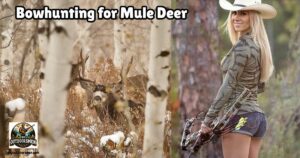
- Best Public Land Mule Deer Hunting
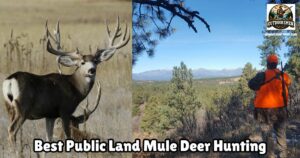
- Drone-Based Scouting Services For Mule Deer
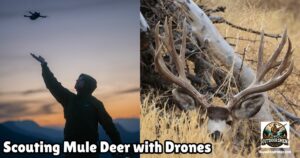
- Late Season Mule Deer Hunting Tips
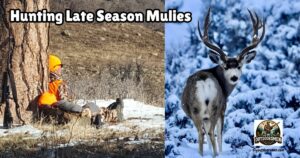
- 8 Tips for Dealing with Hunting Pressure While Mule Deer Hunting
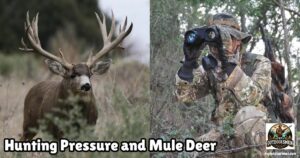
- TideWe Portable Hunting Blinds
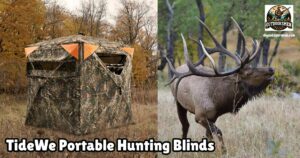
As always, stay safe, enjoy the journey, and please try to leave it cleaner than you found it. If you have any comments, questions, ideas, or suggestions, please leave them in the comment section below, and I’ll get back to you ASAP. You can follow us on YouTube: Man Art Creations for videos of our DIY Adventures.
P.S. Thanks so much for checking out our blog; we really appreciate it. Just so you know, we may receive a commission if you click on some of the links that appear on our site. This helps us keep our content free and up-to-date for everyone. We appreciate your support!
